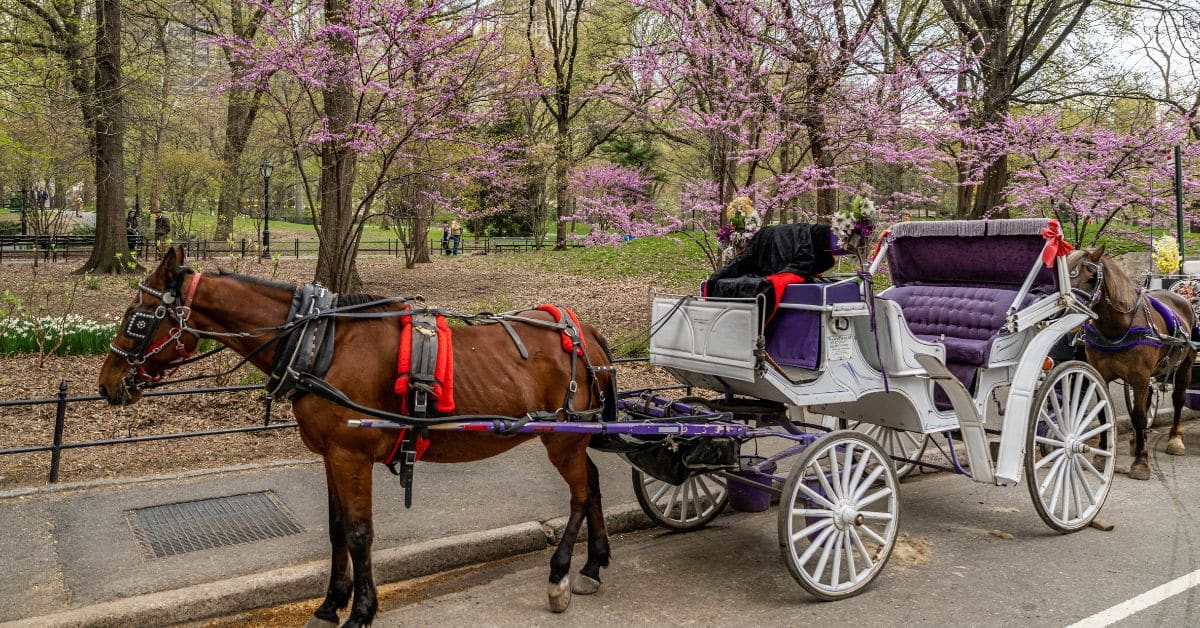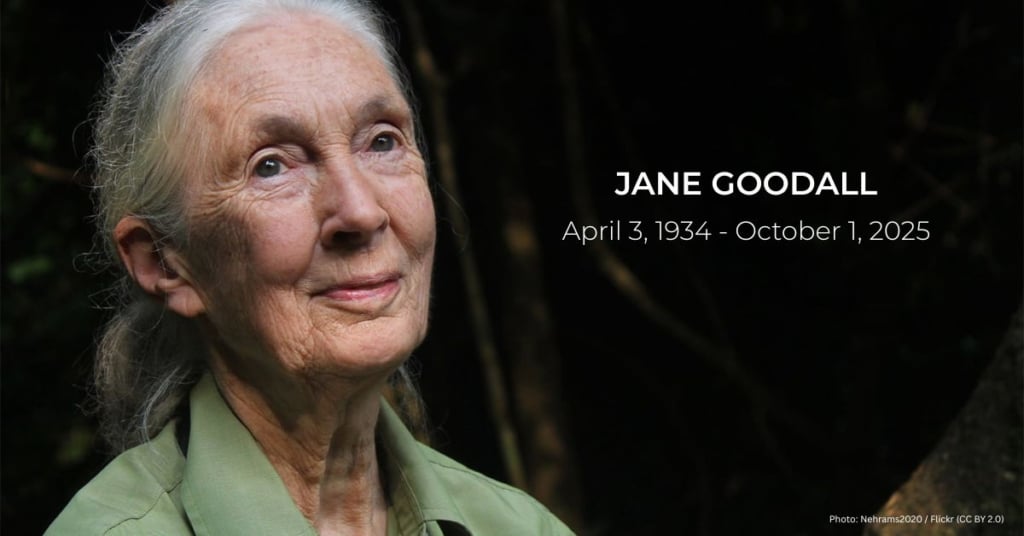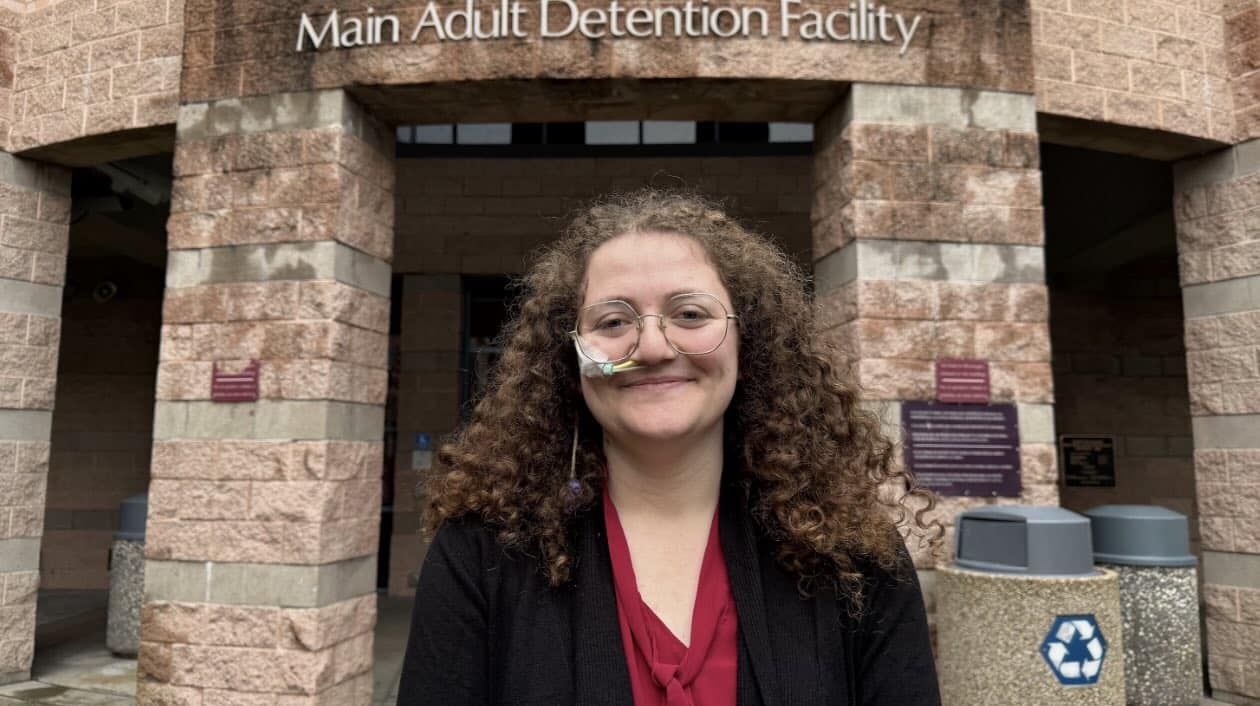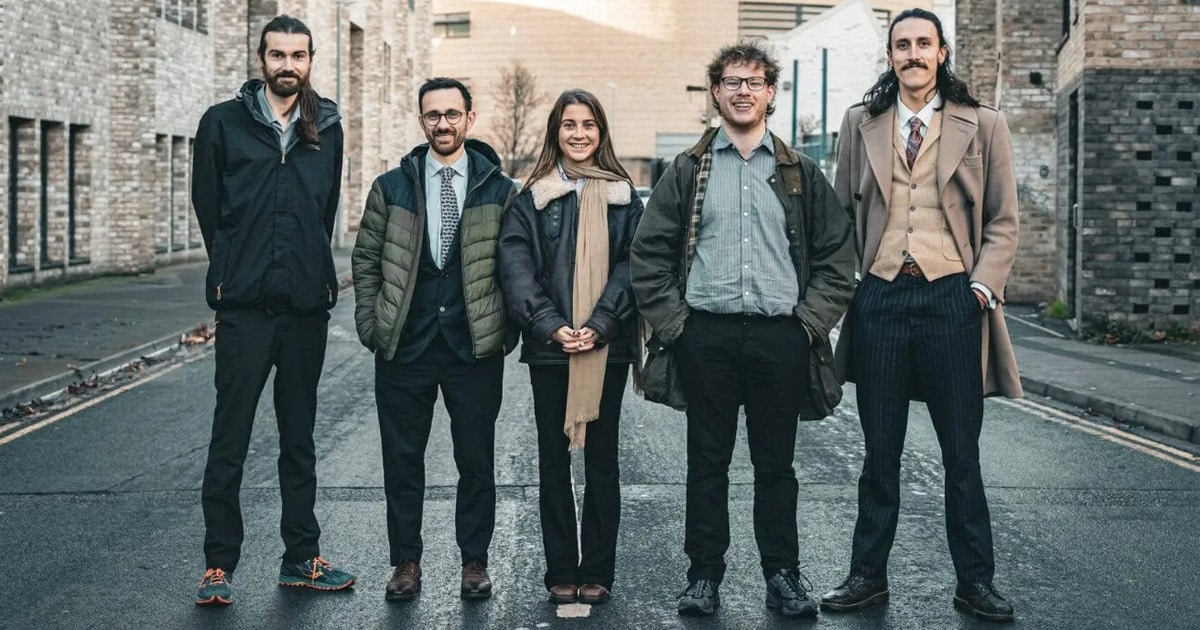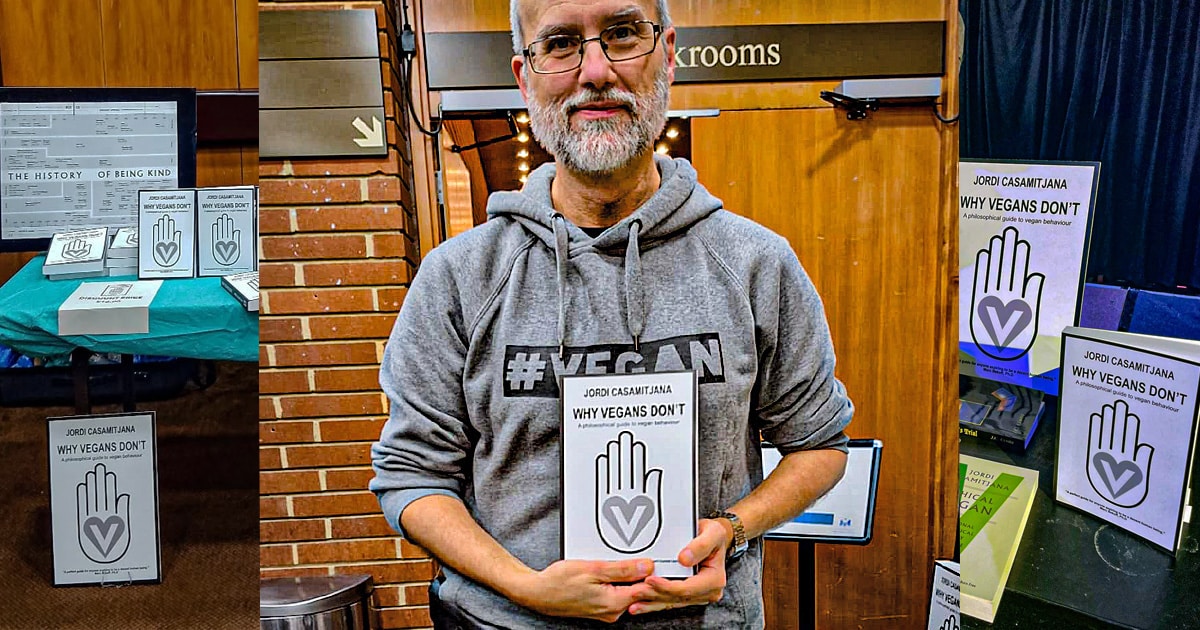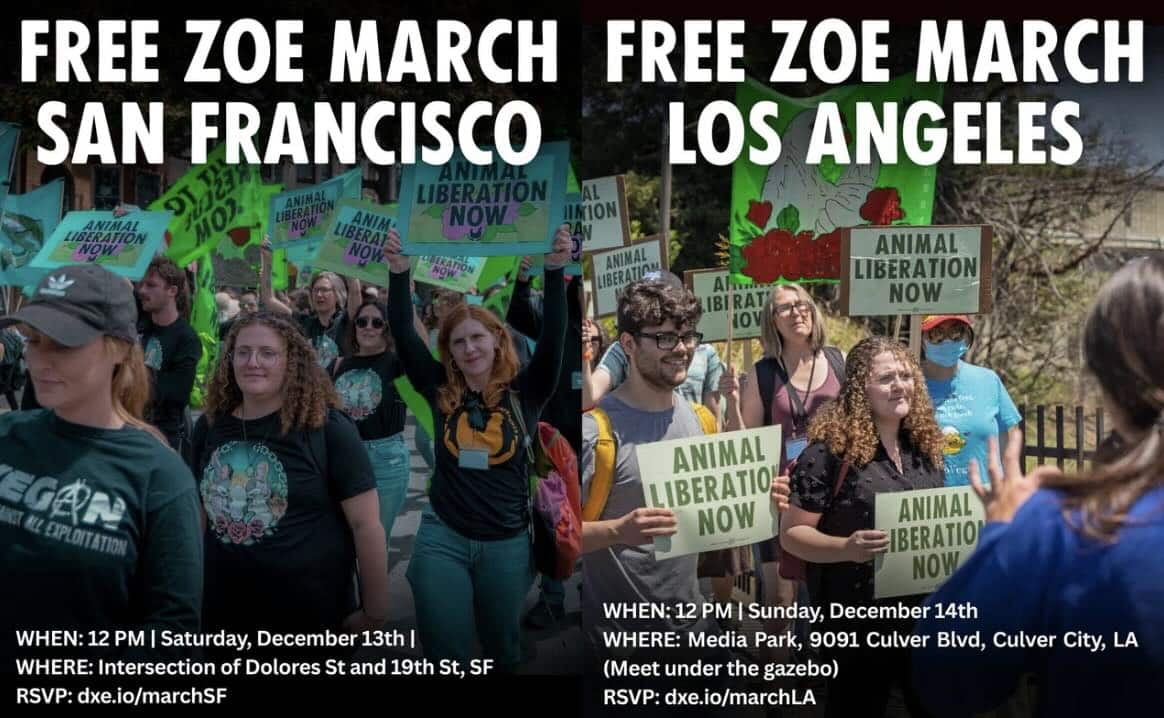(0:28) My name is Peter Otero, and I’m taking you for a little ride through Central Park. (0:34) And I’m going to give you a little history, Junior and I, my horse. (0:46) It was wonderful.
It was very informative, and I enjoyed it thoroughly, (0:50) and I was telling the driver that I rode a horse to school. (0:55) So horses are very close to my heart. (1:00) It was about 20 minutes, and with a three-year-old, that’s perfect.
(1:05) We saw the carousel and where they go ice skating. (1:12) We love Home Alone with Big Home Alone fans, and we saw a lot of scenes from the movie. (1:20) You could rent a row of boats or take an Italian gondola ride.
(1:27) I think the horses and the carriages bring special elements to New York. (1:31) It reminds me of old movies and old England and the old days when there were no cars. (1:36) So I think it’s a charming feature of the park and of the city.
(1:42) We’re going to come up here on Strawberry Fields. (1:47) I thought it was scenic. I thought it was a New York experience.
It was worth the money. (1:56) Real Strawberry Fields is in Liverpool, England. (2:00) My grandma has never been to Central Park before.
(2:03) She was dying to take horse rides, so her mother’s day. (2:09) We’ve tried to cross strawberries inside of Strawberry Fields here, but the squirrels kept eating them. (2:16) New York is just a beautiful city, and going on the carriage ride is just perfect.
(2:20) I did want to Quebec City, but this was better. (2:31) So now I’m going to show you another part of the business, which is working in the streets. (3:18) On January 2, 2006, a horse named Spotty was returning to his stable, and something happened.
(3:26) He was spooked. It’s not unusual for horses to spook in the city. (3:31) And he ran into traffic, and can you imagine a huge horse over a thousand pounds running with a carriage still attached to his back? (3:42) It was me and my two friends.
We were sitting there having dinner, and all I could see out of the corner of my eye was this horse kind of like going really fast, clearly out of control. (3:52) And he crashed into a station wagon. There were two people in the station wagon.
Both of whom ended up in the hospital. (4:00) I saw the driver of the carriage kind of go flying. (4:10) There was a lot of blood on the horse, and I personally didn’t approach the horse because it looked like it would have caused it more pain.
(4:19) But what I wanted to do was go to its face and try and calm it down. (4:24) And this poor horse was so badly injured that he was later euthanized. (4:37) After this accident, many of us came together and we thought this was absolutely the deciding factor.
(4:43) We were going for a ban. There was no question we were going for a ban. (4:49) So we got together, and we formed a coalition to ban horse-drawn carriages.
(5:07) The carriage horses in the modern-day city is out of place. (5:11) You see them in these crowded, congested streets, and they just look like it’s a time warp. (5:17) Like they’ve come from a different kind and a different place and just been dropped there.
(5:23) And it’s really unhealthy for the horses. It’s unsafe for the horses, and what amazes me is it jeopardizes the public safety. (5:36) All of a sudden, we heard this loud noise.
We thought it was a car crash. (5:40) When we looked over, one of the horses that was pulling the carriage had gotten clipped by a car and was bucking wildly. (5:48) His rear hoes were hitting the car, destroying the hood and the front fenders.
(5:52) And all of a sudden, he broke loose from the carriage, started running down 6th or 7th Avenue, (5:59) and the carriage guy started chasing him down the street, couldn’t catch him. (6:02) And I felt bad for the horses. He was just walking down the street in some careless purse and just slammed right into him.
(6:09) These are prey animals and not predators. (6:12) That means that their environment needs to be free from any kind of stimuli, (6:17) which they will interpret as frightening or obnoxious, as the official term is. (6:23) A frightening stimulus could be a sound, an opening of an umbrella rapidly, someone tossing a beer can nearby.
(6:35) Shit! (6:49) But the mistake that you can make is to trust your horse. You never trust your horse. (6:56) Because they can spook at any time.
(6:59) James Williams and team were cautious Saturday because their music is blamed for scaring a horse that spooked and died when it ran into a tree Friday. (7:13) Carriage owners want the city to ban street musicians from performing near their horses. (7:36) Even if they were raised in the environment and it’s all they know, (7:41) I still think that the constant busyness unnerves them because horses are nervous animals.
(7:48) And they need to be out in big spaces where there’s not a lot happening. (7:54) Horses freak out when they’re on a farm. In the middle of nature, they get skittish.
(8:01) Knowing how horses are, I can’t imagine how they feel with all the busyness going around. (8:06) And I know that that’s why they must keep the blinders on them. (8:10) Because the horses would get so freaked out and distracted if they saw people in cars going about.
(8:22) Over the years, there have been many accidents in which horses have been injured and killed and people have been injured very badly. (8:31) In the past 10 years, in New York City alone, there have been at least 21 traffic-related accidents involving horse-drawn carriages. (8:42) Just last year, a man broke his pelvis.
A woman was partially blinded when she was thrown from the carriage. (8:52) Plus, there is no safety device in that carriage. You know, if you’re a kid, you’re thrown from that carriage.
(8:58) You’ve got no helmet, you’ve got no seat belt, you have no airbag. (9:03) Needless to say, the horse has absolutely no protection at all either. (9:06) But you have a lot more of a chance of walking away from car accident than you would if you were in an accident with a carriage.
(9:15) As we’re driving into the traffic, we certainly had to wonder, gee, you’re coming off in close to a taxi, so you wonder if you’re going to end up in an accident. (9:24) Just the traffic slows down out here, that’s the thing. Because at home, if you’re in your car and you go past a horse, you have to slow your vehicle right down.
(9:36) And these horses are competing with any number of vehicles, from fire engines, to ambulances, to taxis, to people on bicycles, to pedestrians. (9:55) People are very offensive drivers. Junior and I have to be very, very, very, very defensive drivers.
(10:03) These buses and cars that want to turn, and the cabs, they don’t watch out for anybody, anything. (10:12) As a paramedic in New York City, I don’t think that the horses belong on the streets. They impede our response to emergencies, they get in our way, there’s no way to get by them a lot of the times, and we curtail how we respond when the horses are on the streets.
(10:35) When a driver takes his horse back to be stable, most likely he’s going down 9th Avenue, and he’s mixing with the traffic that’s going into the link of the tunnel. (10:45) It’s a very, very congested area, and there have been many accidents along that strip. (10:52) I had just left the hospital, and I made the ride on to 9th Avenue, and there was a red light, and the horse driver thought he could get the horse through the red light, and the cab smashed into the side of the horse and caused this horrible accident.
(11:10) The horse driver was injured, and he went to the hospital. The cab driver also went to the hospital, and the horse didn’t make it. (11:21) You realize that it’s only going to get worse.
These accidents are going to continue to happen, and eventually somebody is going to get killed. (11:47) On September 15th of 2006, a horse named Juliet collapsed in Central Park, and the driver tried to get her up by beating her. (11:55) A crowd gathered, and the police were called, and the policeman even pulled his gun.
(12:01) There were a lot of people surrounding the horse. I think a lot of people were appalled by it. (12:06) The guy was on the phone supposedly with his veterinarian.
He said, well, you know, the vet said that I should beat her to get her up. Well, Juliet never did get up. (12:16) But it was a terrible image that went out to the world, you know, that this horse was being beaten.
(12:24) As a veterinarian who has studied horse health and welfare and safety issues, especially regarding horses in an urban environment, there are certain things about New York City that can’t be corrected in such a way that would make the industry humane. (12:47) If you think of the horses, they are for an eight-hour shift, sucking down the fumes of all the trucks, buses, cars, cabs that go whizzing by them. (12:57) These are horses who have to struggle to move air in and out of their lungs.
(13:11) If a horse heaves before he or she comes into the industry and then has to live this wretched nose-to-tailpipe existence, (13:20) many of these horses become much more ill and have much more trouble with their breathing. (13:28) If you see a horse who is doing this excessive salivation which gives the appearance of frothing, working his tongue and kicking and prancing around, it could indicate respiratory distress. (13:44) I have had horses here at my farm that owners purchased out of New York City stables to save them from the fate of living in those stables.
(13:59) Every one of those horses had a respiratory problem. (14:03) After it left the stables and was away for it for several months, their respiratory problems started to go away. (14:12) Many of those horses come into the carriage horse industry in New York with pre-existing lamenesses.
(14:30) And those lamenesses will do nothing but worsen when they are put on these very unnaturally hard concussive surfaces that horses did not evolve to handle. (14:43) Horses working on hard pavement should have some kind of a cushion to protect their feet from concussive injury. (14:52) We’re talking about some kind of a pad between the hoof and the shoe.
(14:57) Occasionally the horses will have one, but by and large they don’t. (15:02) I have on many occasions seen horses that are lame pulling carriages. (15:16) You see them running, the horse’s carriage driver encouraging them to run, and that always kind of scares me a little bit to see them moving that fast with all the potholes in these streets.
(15:33) The idea that one misstep, you know, could take them down. (15:38) I was walking down the street. It turned out I was quite near the stables.
(15:44) And I heard this cantering sound, and coming down the street was a horse-drawn carriage. (15:54) They were using the horse as if it was in a chariot race. (15:59) And this poor horse, who cannot be shard for moving at that speed down a paid street, was just barreling along, frothing at the mouth.
(16:12) They were trying to skip to get through the lights. That’s what the game was. (16:30) One of the major hazards that the horses, particularly in New York City, face in the summertime is stress from the intense heat that comes off of these hot baking street surfaces.
(16:43) The temperature at the ground level where the horses are working can be as much as 41 degrees higher than that that is cited by the U.S. Weather Bureau in their morning weather reports. (17:01) When we couple that intense heat with a high humidity, such as we find in New York City in the summer, the horses simply cannot cool off. (17:21) There are a few cities in the world where horses have died of heat stress.
In other words, they essentially bake to death on these hot urban streets. (17:30) New York City is one of the worst. (17:35) I was driving past 62nd Street with a friend of mine, and I saw the horse go down.
(17:43) And I went shooting down the block and I said to the driver, I’ll call a veterinarian. (17:48) And he said, absolutely not. We don’t need a veterinarian.
And I said, but we do need a vet. He’s out and he’s going to die. (17:55) Just looking at the horse, I could see, I mean, his eyes were rolled back.
He was out. He was not getting up again. (18:03) And the driver said to me, well, we just don’t need a vet.
I will take care of it. He was pouring water over the horse. (18:11) And had it not been for a nurse who happened by, the horse would have been dead.
(18:29) Horses are supposed to be taken in off the street when it’s 90 degrees. There is no consideration for humidity. (18:38) And then they’re also standing with no shade.
That should be a city regulation, that their awning is where they stand. (18:48) The law clearly states that the horses are not to be taken out in adverse weather. (18:52) And yet they were out in a blizzard in February for hours until the ASPCA brought them in at one o’clock in the afternoon.
(19:02) It’s very dangerous to have horses out in a snowstorm. You’ve got taxi cabs, you’ve got buses, you’ve got cars. (19:13) It’s such a radical notion to imagine live animals in the middle of streets of New York City in the 21st century.
(19:23) They don’t belong there, let alone in a blizzard. (19:30) Back in 1999, during the winter, there was a horse walking across town and she stepped on an electrified metal plate with her metal shoes. (19:45) And she was fatally electrocuted, caused a lot of concern, and like most carriage horse deaths, eventually they’re forgotten.
(20:07) Remember that one thing that happens in an urban carriage horse tourist trade situation is that the horses have to stop and start constantly. (20:16) Think of your physics. Overcoming inertia is what puts strain on any engine if we think of a horse as an engine in this case.
(20:24) So every time it has to overcome inertia to pull it and get it moving and then plant its own or his or her own hooves to stop it, that puts a lot of stress on these horses. (20:37) And of course they have to do this several times during the course of their ride. (20:41) When the traffic stops, when they come to stop signs, when they come to crosswalks, they are stopping and starting much more than would be typical in any other kind of carriage horse use.
(20:57) I understand that the horses are only watered out of a communal tub, and this is a veterinary nightmare. (21:04) This is the kind of thing we are told on day one is improper for any kind of animal management. (21:10) It is an enormous source of disease transmission from horse to horse to horse to horse to horse.
(21:15) And also, since we can’t always trust humans to be kind, you don’t know what kind of pollutants may be being tossed in there when no one’s looking. (21:24) If you walk along the southern end of Central Park, you’ll see the food that they’re eating spilled out onto the ground. (21:38) If that’s not bad enough, the food is contaminated with pigeon droppings.
(21:54) Many of these people who take carriage rides or walk by the horses think that everything’s okay. (22:01) But some people who have a train die realize that some of these horses should not be pulling carriages. (22:08) Some of them are emaciated.
You can see their ribs. (22:14) We noticed some horses looked, well, some of them looked pretty thin, and we worried about that. (22:21) It’s a nice experience, but we do wonder.
(22:25) I was very uncomfortable the whole time. I felt so bad for the horse. I don’t know.
I didn’t like it at all. (22:32) I don’t think that horses belong in Manhattan. (22:41) There are five stables in the carriage horse industry in New York, and they’re on the far west side of Manhattan.
(22:46) The furthest one is about two miles away from Fifth Avenue and Central Park South, which is where the horses work for most of the day. (22:55) Most of these stables are multi-storied, which is very unusual because these horses have to go up ramps to get to their stalls. (23:05) And if there was a fire, it would be a disaster.
It would be a total, unmitigated disaster. (23:13) When I was with the ASPCA on carriage horse stable inspections, (23:18) my biggest concern is the impossibility of evacuating the horses in the event of a fire. (23:25) The National Fire Protection Association guidelines for animal housing say that a horse should never be housed on a floor that doesn’t have a ground-level exit.
(23:36) These stables store at least a ton of hay, which is highly flammable. (23:43) There was a fire in a riding stable in Brooklyn in 2000, in which 21 horses were burned to death. (23:54) It’s easily conceivable that something like that could happen in a stable in Manhattan.
(24:03) The public is not allowed to go into the stable, so the only way that I could gain entrance was as an official veterinary expert working on behalf of the American Society for the Prevention of Cruelty to Animals. (24:17) I was really, I have to say, horrified by what I saw. They were dirty.
They had insufficient bedding. (24:27) The city requires that stall sizes be a minimum of 4 foot by 10 foot, and that’s pretty small. That’s considered to be a standing stall, (24:36) which means that the horse is aligned 180 degrees in a straight line, and he goes from that confinement to the confinement between the shafts, to the confinement of his tie stall, to the confinement of the shafts.
(24:52) So legally, they can be harnessed for the carriage for 10 hours in a day, too long for a horse to be between the shafts of a carriage, (25:04) maybe 9 or 10 hours wouldn’t be so bad if they spent the rest of their day in a field somewhere, going where they wanted to with other horses around, but they don’t. They go back to a tie stall or a small box stall. (25:20) I think a box stall can be about 8 by 10, and it’s considered a box stall, but it’s still pretty small.
(25:26) A recommended size for a box stall for a big horse, a draft horse, is about 12 by 12, and when they lie down, they need a lot of space to really stretch out, and they don’t have it with stalls this small. (25:45) Many people have heard some second grade teachers say that horses are amazing because they can sleep standing up. Well, they’re prey animals, so they can catch a catnap standing up.
(25:57) But what they really need is deep sleep, where they are stretched out flat, with all their legs extended, and that’s the way my horses, given their opportunity, will sleep invariably every day. (26:08) Thanks for your time. (26:11) Manhattan real estate is so expensive that it’s just not economically feasible for the stable owners to give horses adequate space.
(26:23) They’re just buildings where you store a horse, store a horse in a little prison cell. (26:32) This is the side of the stable, and you can see these tiny little windows that are actually closed, so it’s, you know, it’s a poor excuse for ventilation. (26:47) You can’t tell from just looking at them.
They’re cats. (26:53) I just… I assume they’re in the park. I just assume that.
It’s a big park. (26:58) You know, maybe the public thinks that the horses go home to a nice big field. (27:05) So the public really gets a notion of, oh my God, then the public gets mad.
(27:11) I think there’s definitely opportunity for them to surely keep the horses within the park. (27:16) Maybe not even bring them onto the road here, just keep it within the park. (27:21) Is that not something that could be considered, or… (27:24) It’s a landmark.
It’s never going to happen. They’re not going to build stables in Central Park. (27:32) Horses are herd animals.
They love to socialize with other horses. (27:39) They develop relationships, they hang out, they play. (27:44) If you watch them when they’re together, they have their own social order.
(27:53) If you then are going to take these originally wild animals and domesticate them and put them into our lifestyle, (27:59) you want to make sure that the horses can have an opportunity to be out every day, able to socialize, interact physically and playfully. (28:11) Where do they go out into? Is there a paddock at all where they can go out into a big area? (28:18) It would be great if they go north of Central Park where they can at least go out and raise. (28:26) If the city wants the horses here, they should give them some land to graze on.
(28:43) Beasts of burden have just a horrible life. (28:47) That’s what those horses are, they’re beasts of burden. (28:54) They look depressed, they look worried, and they don’t like being near people.
(28:59) You go up to them and they’ll turn their head away. (29:02) They don’t have a good life and it shows in their faces. (29:09) You can put pretty words on things, but when it comes down to it, the horse is suffering.
(29:46) New York has had laws since the 1800s that say being cruel to animals is a crime. (29:52) A carriage horse working the streets in these kinds of conditions is cruel to animals, period.

